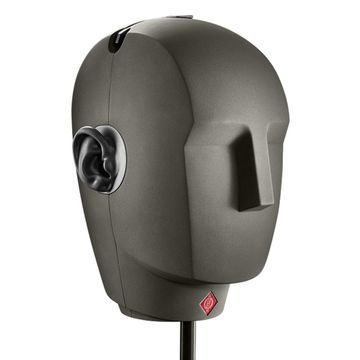Windows Sonic, Dolby Atmos for Headphones, and DTS Headphone:X all support 3D Audio via the Spatial Sound API.
That's real 3D Audio with height information; but games have to support this.
I believe this is an incomplete list, but the number of games which support Spatial Sound is relatively small.
- Assassin's Creed Origins
- Battlefield 1
- Borderlands 3
- Call of Duty Modern Warfare
- Final Fantasy XV
- For Honor
- Forza Horizon 4
- Gears 4
- Gears 5
- Mass Effect: Andromeda
- Metro Exodus
- Overwatch
- Resident Evil 2
- Rise of the Tomb Raider
- Super Lucky's Tale
- Shadow of the Tomb Raider
- The Division 2
- Zone of the Enders: The 2nd Runner M∀RS
I thought I remembered
Watch Dogs 2 being listed as supporting Atmos, but I don't see it listed anywhere now, and see a number of posts with people saying that they're having difficulty getting it to work.
Sonic/Atmos/DTS:X
also support virtual surround in games that only have multichannel (5.1/7.1) audio support rather than Spatial Sound support.
On Windows, you can also get 3D audio in older games that use DirectSound3D HW (mid '90s to ~2008) if you have an X-Fi sound card, via its CMSS-3D support.
This is not correct at all.
- 3D Audio is a form of Virtual Surround.
- 3D Audio and Virtual Surround are both types of processing to create Binaural audio.
The easiest way to describe it is to call them 2D Virtual Surround and 3D Virtual Surround.
Stereo pans sounds left and right. When you're wearing headphones, it's like the sound goes right through the middle of your head, and there are hard cuts when a sound moves from the left to the right side.
2D Virtual Surround only has flat directional information.
It takes the sound "out of your head" and can position sounds in a ring around you:
(technically, that should be a filled-in circle, but it's easier to represent like this)
How accurately it does that depends on the processing and the source.
If it's a game using DirectSound3D it has access to 3D object positions and can place them very well.
Most 2D virtual surround sound processing is derived from a 5.1 or 7.1 audio signal though, so the positional information is not as accurate.
While that may not be as accurate, it's still
far more accurate than stereo. If you want to simplify things, a 7.1 system could be considered as having seven stereo pairs of speakers it can use to position audio.
3D Virtual surround can position audio in a sphere around your head:
Instead of a flat ring of sound around the player, height information is now included to create "3D Audio".
This may be achieved via 3D positional information, as is the case for DirectSound3D HW+CMSS-3D, Microsoft's Spatial Audio API, or Sony's Tempest Engine.
Or it can be done by downmixing discrete channel formats like an Atmos 7.2.4 mix which has four height channels.
But it's still virtual surround, and all virtual surround technologies are trying to create a Binaural audio source.
"Binaural audio" as it's commonly known, is generally referring to pre-recorded audio tracks, which were recorded using a pair of microphones, a specific binaural microphone with ears, or an entire dummy head.
This is the "easy" way to create binaural audio, since it doesn't require any fancy processing.
But you can't really do anything to reposition the sound after the fact; you can only play it back as-is.
So it works well in a game like
Hellblade where they use it as an effect to have voices coming from all kinds of directions around your head, but not during gameplay where you have camera control and sounds have to change position in real-time.
And the HRTF is baked-in, since you've recorded it with a specific set of ears. It still has the problem of not working nearly as well if your ears are too far from that model; though I think the baseline effectiveness is likely to still be higher than an "incompatible" virtual surround.
All virtual surround is trying to essentially mix the audio to recreate the experience of these binaural recordings in real-time.
Since that's a very complex thing, and since it depends on the listener, it only works to varying degrees of effectiveness. That's why many people have their own preferences for which virtual surround tech they think sounds best.
Maybe Sony's Tempest Engine will be the most effective implementation yet, since they're planning to offer multiple HRTFs and are throwing a lot of audio processing capabilities behind it; but it's still virtual surround.
In some ways, I do wonder if the bigger difference is actually going to be the complexity of the audio simulation being done to enrich the soundscape, than their virtual surround tech.
Maybe CMSS-3D's virtual surround was
perfectly matched to your ears and the positional information was completely accurate. Things still wouldn't have sounded
real because audio design and simulation of the acoustic environment back in 2005 was far more simplistic. That's where the ability to process hundreds of sounds at once while using ray-tracing comes in.







